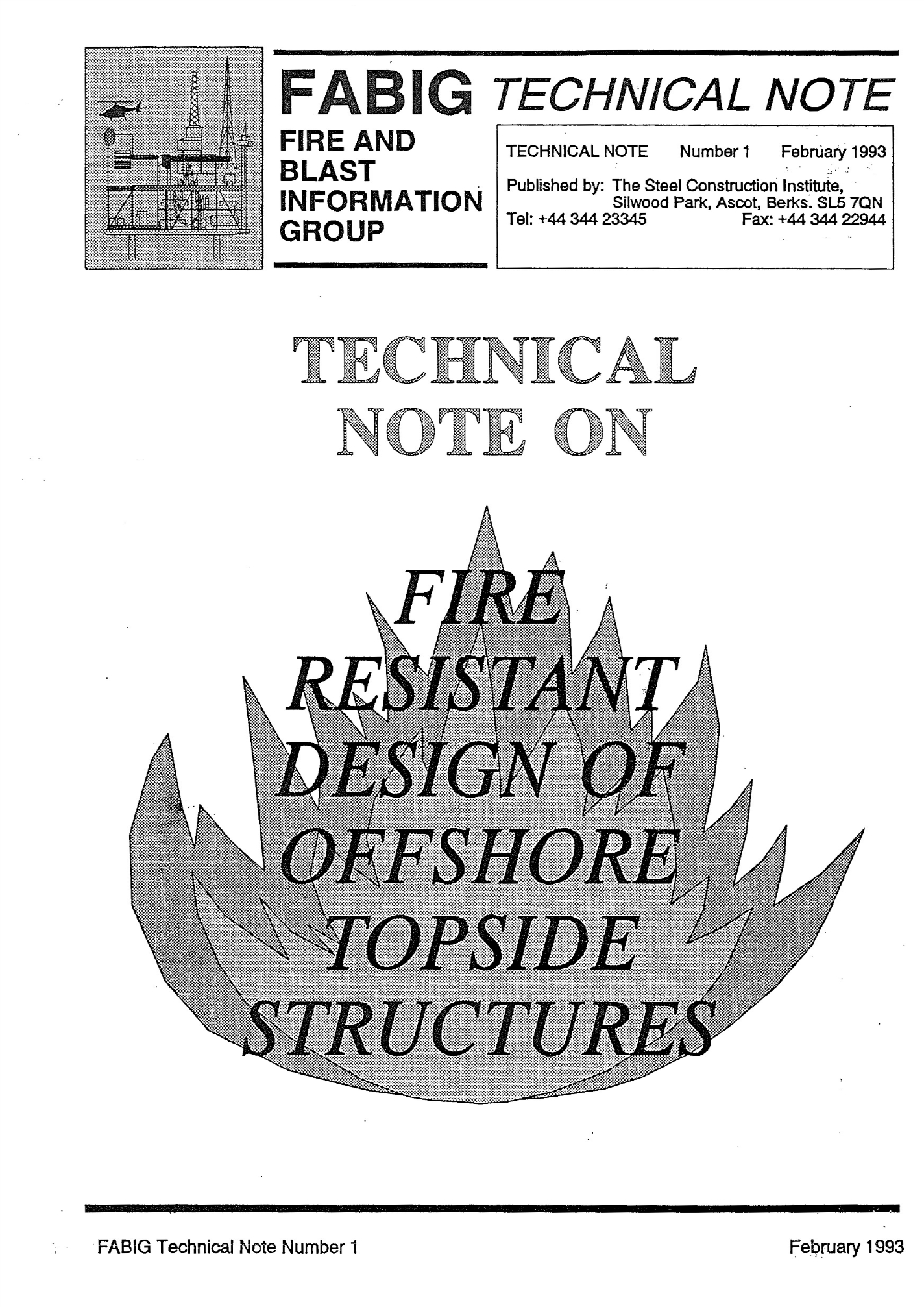Technical Note 01
Fire Resistant Design of Offshore Topside Structures

FABIG Members: Log-in to access all FABIG resources LOG IN
SUMMARY
IMPORTANT NOTE: Technical Note 1 has now been superseded by Technical Note 13
Section 4 of the Interim Guidance Notes for the Design and Protection of Topside Structures against Explosion and Fire (IGN) gave design guidance for fire resistance. This technical note is intended to complement that section as follows:
- In a number of subject area, more information is given;
- More commentary is included, particularly with regard to the analysis methods;
- Worked examples are included.
It is intended that this document should not duplicate the IGN, although for clarity it is inevitable that parts will.
The scope of this document is only intended to cover the following sections of the IGN:
- Section 4.4 - Determination of Component Temperatures
- Section 4.6 - Response to Fire Effects
IGN Section 4.4 provides a number of equations, but comparatively little guidance on how to apply them. Through the worked examples this technical note attempts to illustrate how the equations are used.
IGN Section 4.6 gives the main criteria to consider when trying to determine the fire resistance of a structure, but is considered to be over concise. In particular it is short on methodology and inadequately covers the range of techniques that are available.
- INTRODUCTION
- BACKGROUND
- ACCEPTANCE CRITERIA
-
Purpose of acceptance criteria
-
Acceptance criteria (1) Strength
-
Acceptance criteria (2) Deformation
-
Acceptance criteria (3) Collapse
-
- PROPERTIES OF STEEL AND OTHER MATERIALS IN FIRE
-
Strength reduction factors for structural steels
-
Behaviour of other steels and materials in fire
-
- HEAT FLUX LOADINGS
-
What is heat flux?
-
Defining credible fire scenarios
-
Effect of fuel type
-
Effect of ventilation
-
Effect of position of member in relation to the flame
-
Heat flux from pool fires
-
Heat flux from jet fires
-
Fire models
-
- FIRE PROTECTION SYSTEMS
-
Passive fire protection systems
-
Active fire protection systems
- Firewalls
-
- DETERMINATION OF COMPONENT TEMPERATURES
-
Introduction
-
General heat balance equation
-
Difficulties in solving the heat balance equation
-
Configuration factors
-
Simple Hp/A method - assumptions and section factors
-
Simple Hp/A method - calculation of temperature rise of the steel section
-
Simple Hp/A method - numerical examples
-
More rigorous methods
-
- STRUCTURAL RESPONSE
-
The nature of failures
-
The effects of fire
-
Thermal restraint
-
Determination of critical structural members
-
Linear elastic methods
-
Member based methods of fire design
-
Non-linear methods
-
Reliability-based methods
-
- CONCLUSION
REFERENCES
APPENDICES
- DESIGN EXAMPLES
-
Heating of steel remote from source
-
Variation in heat flux with location relative to fire
-
Conduction along member
-
Manual application of heat balance equations
-
Computer solution of heat balance equations and HP/A method (Includes computer program listing)
-
Thermal restraint illustration
-
Different methods of thermal response analysis
-
Online purchase options:
Non-Members of FABIG are able to purchase PDF copies of the FABIG Technical Guidance documents.